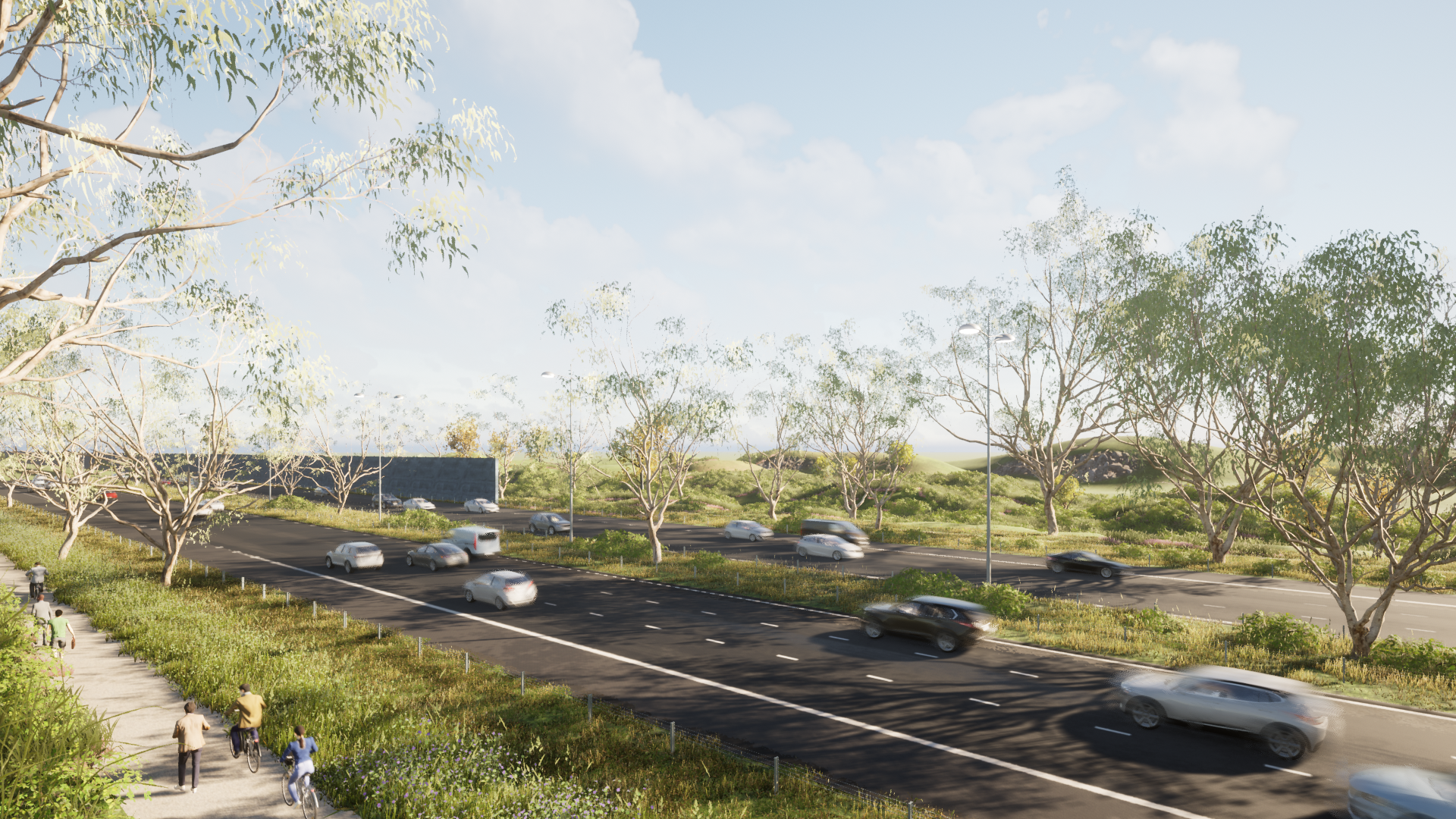
Moving Melton
Transport Prospectus 2022
Rail
Electrification of the rail line from Sunshine to Melton
The growing suburbs along the Melton rail line are serviced by diesel regional trains with commuters having to fit into already overcrowded Ballarat services.
The extension of the metropolitan electrified rail network from Sunshine to Melton and the separation from the Ballarat line would potentially triple the passenger carrying capacity and improve travel times.
Metropolitan trains can carry up to 1,500 passengers at a time and can operate at increased frequency.
The upgrade of the rail network would divert traffic from surrounding roads leading to less congestion and embed more affordable, healthy and sustainable transport practices in our community.
Demand
Patronage along the Ballarat-Melbourne line has grown from 3.17 million passengers a year in 2013/14 to 4.90 million in 2018/19, with following years impacted by COVID-19.
Over the next 30 years 183,500 people will move into the railway line corridor, and six new suburbs that are directly aligned to the rail line will bring 65,900 new dwellings. The existing rail network will not cope with this increase in population.
Economic Benefits
Independent analysis by Clarity Consult, based on the Victorian Integrated Traffic Model, found that electrification of the Melton Line would see a Present Value of Benefits of $910 million over 30 years. This is made up of $529.8 million in Public Transport benefits, $231.2 million in Private Vehicle benefits, $9.2 million in Freight benefits and $139.9 million in Resource benefits.
By 2041 the electrification will result in:
12,000 less cars on the network every day
77,300 less private vehicle kilometres travelled every day
15,147 fewer trips by car per day, primarily in City of Melton
33,000 entries and exits every day for all stations in the City of Melton
$236,251 daily reduction in the 'cost of congestion'
27% increase in public transport usage across Melton, with 15,000 people able to make more sustainable travel choices and using public transport options instead of driving
36.1% or 6,363 more bus boardings in City of Melton
It will completely alleviate passenger crowding wait times, which otherwise will be the only rail line in the future with insufficient capacity for commuters to turn up and catch the next train.
Solution
Extension of the metropolitan electrified rail network from Sunshine to Melton and separation from the Ballarat line
* A re-elected Andrews Government has committed $650 million for extra stabling and upgraded stations including longer platforms to help deliver nine-car VLocity trains for the Melton line.
• 2041 Base Case AM Peak with nine-car Vlocity Trains from Melton and Bacchus Marsh (Departing Load at each Station)
• 2041 Project Case AM Peak with Electrification and High Capacity Metro Trains (HCMT) (Departing Load at each Station)
25,000 new residents are expected to move into Mt Atkinson by 2051 resulting in a total population of 32,000. The area also contains large new employment precincts including the Melbourne Business Park, which is projected to create 19,000 jobs, and the Mt Atkinson town centre which is expected to create 10,000 jobs. The closest train stations are five and six kilometres away in Caroline Springs and Rockbank.
Solution
The construction of a new train station on the existing Ballarat line will help reduce road congestion, relieve pressure on nearby stations, reduce car dependency and help support local jobs
Economic benefits
Independent analysis by AECOM found that construction of the Mt Atkinson Train Station by 2026 would see a Positive Cost Benefit Ratio of 2.6. This means the total benefits of the project over 30 years outweigh the cost by 2.6 to 1.
Construction of the station would create 271 jobs and see a net increase of $42 million to Gross State Product.
It is also estimated that the station would reduce car trips in the City of Melton by 1,400 each day by 2051.
AECOM suggests that opening the station by 2026 would coincide with the Stage 1 of the Mt Atkinson Town Centre, as well as the opening of primary and secondary schools in 2023 and 2026.
Mt Atkinson (Hopkins Road): New station on Melton line
• Benefit Cost Ratio of the project
• Artist’s render of completed project
• Proposed location for the new Mt Atkinson Station
• Proposed location for the new Mt Atkinson Station
17,300 new residents are expected to move into Thornhill Park by 2051, resulting in a population of over 23,000 by 2051.
Solution
The establishment of a new train station on the existing Ballarat line will help to reduce pressure on nearby Rockbank station and help reduce car dependency.
Economic benefits
Independent analysis by Clarity Consult found that construction of the Paynes Road Train Station by 2026 would see total benefits of $68 million over 30 years.
It is also estimated that the station would have 11,500 entries and exits every day by 2041.
Thornhill Park Train Station: New station on Melton line
Melton station is one of the busiest train stations along the Ballarat Rail Line.
Observation of boarding and alighting in 2018 shows that Melton Station is busier than Ballarat Station with 6,000 passengers each day compared to Ballarat's 4,100.
While other stations were constructed or rebuilt as part of the recent Ballarat Line Upgrade, Melton Station has seen little investment since the mid 1990s.
Congestion
Exford Road, at the level crossing, currently carries approximately 15,700 vehicles per day and traffic modelling commissioned by Council indicates that this will increase to over 16,600 vehicles per day by 2031.
Solution
The removal of the level crossings at Coburns Road and Exford Road will require a trench and the construction of a new Melton Station within the trenched area
* The Victorian Government has committed to rebuild the Melton Station as part of the removal of the level crossings at Coburns Road and Exford Road.
Melton Station: Upgrade and modernisation
• Artist’s render of completed project
Over 95,000 people will live within the catchment of the Sunbury Rail line near Watergardens Station by 2051, placing additional stress on congested highways and the overcrowded station.
Currently there is a 10 km gap between Diggers Rest Station and Watergardens Station. Yet there are four stations within 10km of Watergardens Station on the city side.
Solution
A new station at Calder Park would reduce pressure at Watergardens Station, reduce road congestion and car dependency for the significant population living in close proximity to the Sunbury line. The Victorian Government has committed to remove the level crossing at Calder Park Drive and to duplicating Calder Park Drive by 2025. The construction of a new train station at Calder Park while undertaking these works could see potential cost efficiencies/savings.
Economic benefits
Independent analysis by Clarity Consult found that construction of the Calder Park Train Station by 2026 would see total benefits of $19 million over 30 years.
Calder Park: New station on Sunbury line
• Map showing the proposed location of the project
